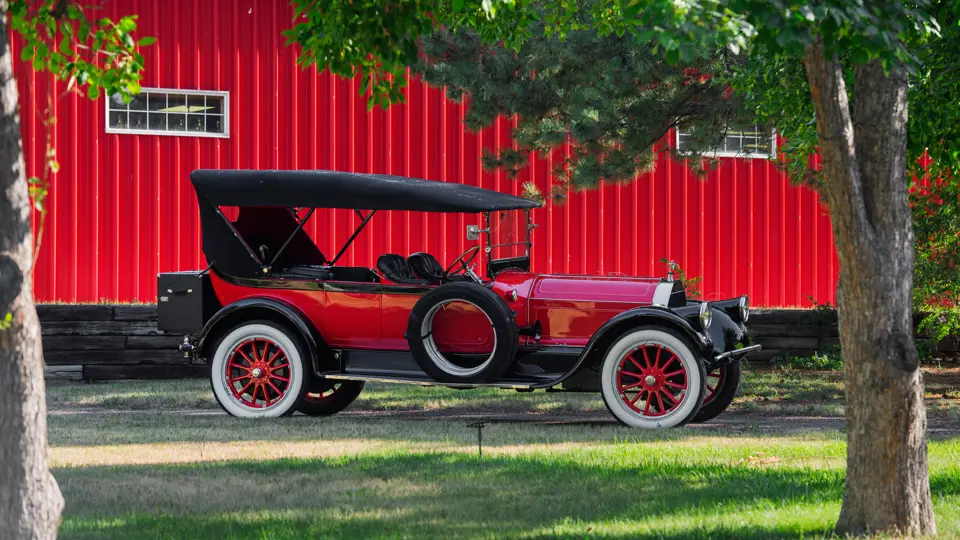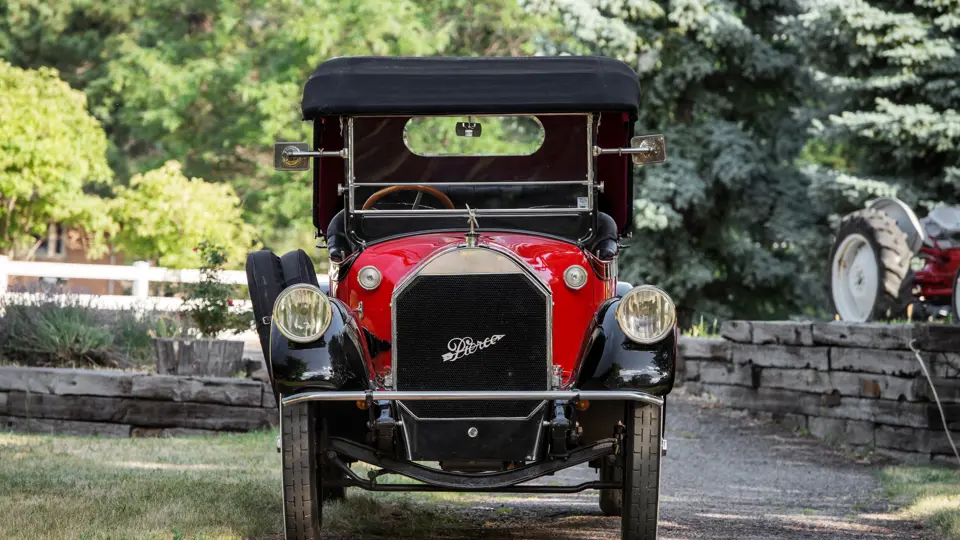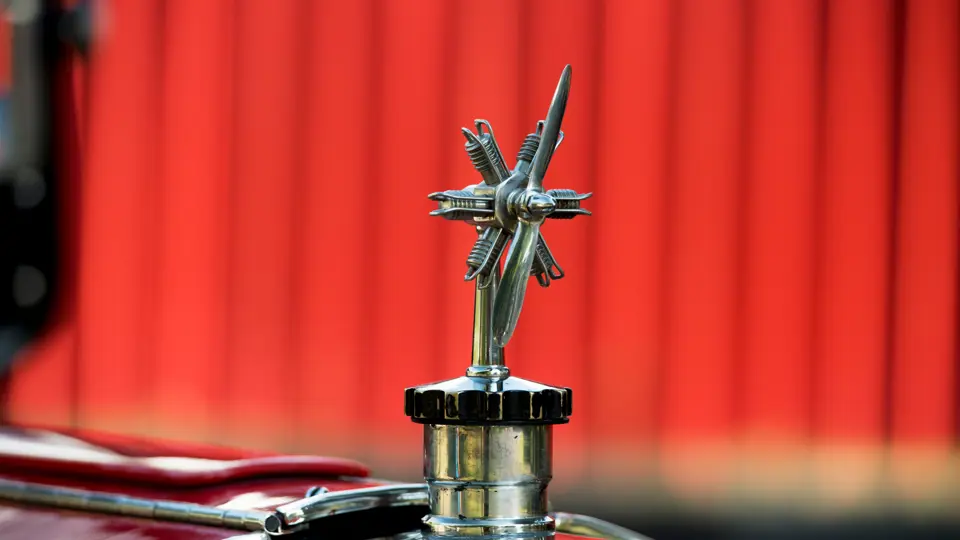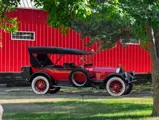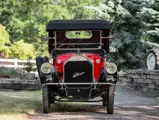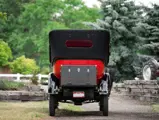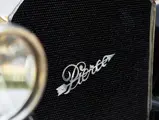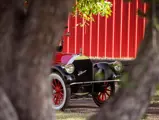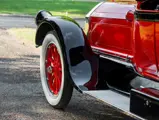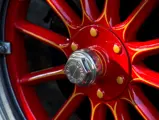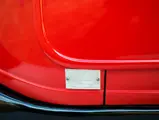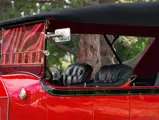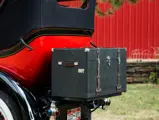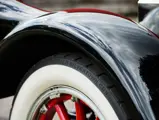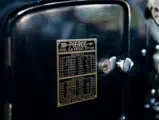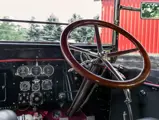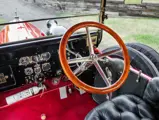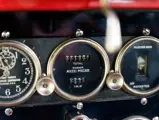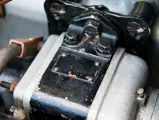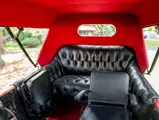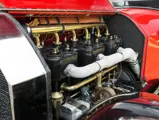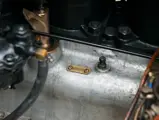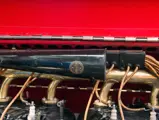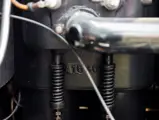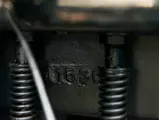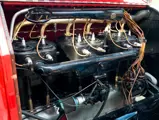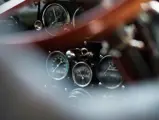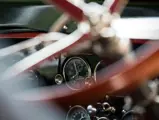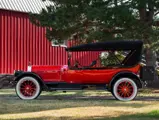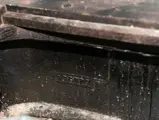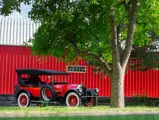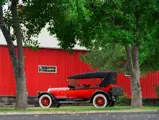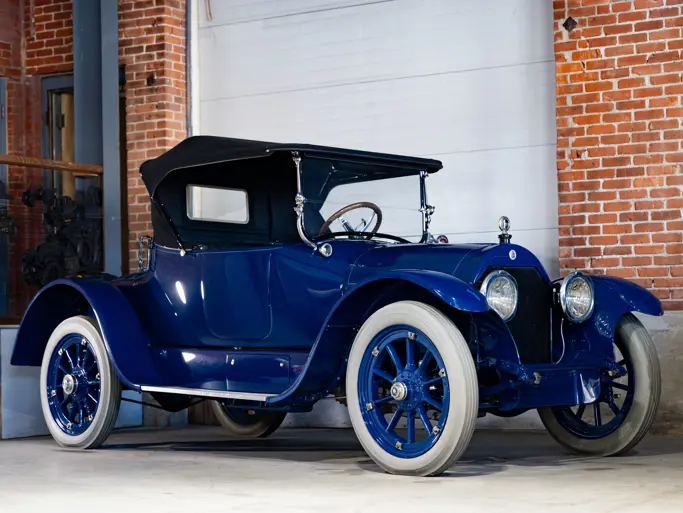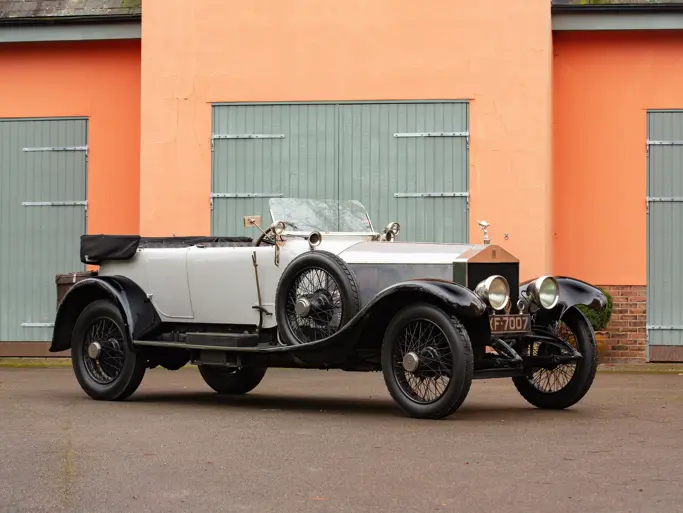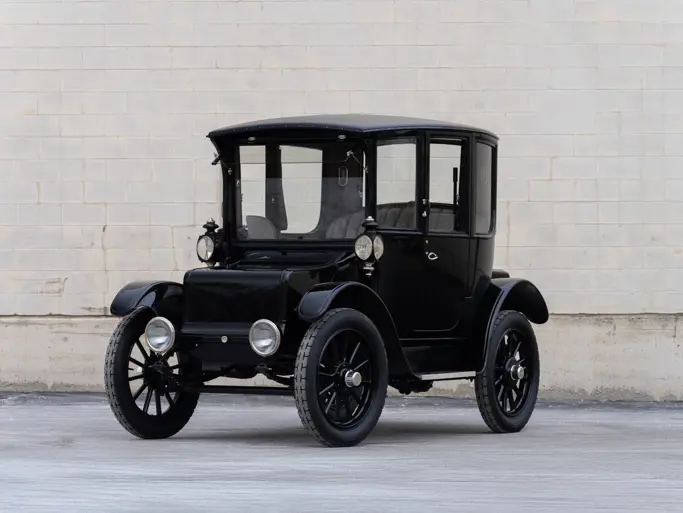60 hp, 824.7 cu. in. T-head six-cylinder engine, four-speed manual transmission, solid front axle with semi-elliptical leaf springs, live rear axle with three-quarter elliptical leaf springs, and two-wheel mechanical drum brakes. Wheelbase: 147.5 in.
George N. Pierce was a bicycle manufacturer. His industrial experience, however, was far more diverse, beginning as a partner in Heintz, Pierce and Munschauer, a Buffalo, New York, company that made bird cages. As the 19th century progressed, the firm branched out into ice boxes and bath tubs. After Pierce bought out his partners in 1872, he renamed the company for himself and embarked on pedal-powered transportation. Taking notice of the interest in self-propelled vehicles, he built a steam car in 1900.
That November, a gasoline-powered car was operating, and in 1901, manufacture of a DeDion-engined “Motorette” began. A defining moment in the evolution of the Pierce automobile came in 1904, with the introduction of the four-cylinder Great Arrow. Pierce’s son Percy drove one in the inaugural 1905 Glidden Tour, winning the reliability contest hands down. Pierces took the Glidden trophy for the next four events. “Pierce” and “Arrow” became so linked in the public eye that both car and company were renamed Pierce-Arrow in 1909. By then, Pierce-Arrows, which sold for $3,050 to $7,200, had joined Packard and Peerless in comprising the “Three Ps” of luxury American motor manufacture.
The early Pierce cars were principally the work of David Fergusson, a British-born engineer of Scots ancestry. He joined Pierce in 1901 and laid out the design for the company’s Motorette and Arrow models. In 1905, as Chief Engineer, he toured Europe with manufacturing vice-president Henry May. They visited all the British and Continental automobile factories, looking at design trends and manufacturing methods. In particular, they noted the move to larger cars with six-cylinder engines. This would set the pattern for Pierce-Arrow cars for the next 15 years.
The first six-cylinder Pierce was the Model 65-Q, introduced in 1907. Like the fours that preceded it, the new powerplant was of T-head configuration, displacing an impressive 648 cubic inches. Built on a 135-inch wheelbase, nearly a foot longer than the largest four-cylinder model, the 65-Q weighed in at slightly more than 4,000 pounds. About 100 were built, as opposed to 900 fours, but the tide was turning. A smaller, 40-horsepower six, the 40-S, was added in 1908, and another derived from the 24-horsepower four-cylinder 24-T before the year was out. The last Pierce fours were built in 1909. For 1910, there were three sixes: the 36-UU, on wheelbases of 119 and 125 inches; the 48-SS, with 128- and 134-inch chassis; and the 133- or 140-inch 66-QQ, which was basically the 65-Q with a quarter-inch larger bore. The model numbers were derived from the cars’ rated horsepower, which was calculated solely from the bore and number of cylinders.
Successive models of 38, 48, and 66 horsepower would comprise the Pierce catalog through 1918. The years 1911 and 1912 were largely carryovers of the 1910 line, but 1913 brought a very significant change: the hallmark fender-mounted headlamps. These were the work of designer Herbert M. Dawley. Dawley, who worked with Pierce from 1912 until the end and also had his own film production company, wrote in his patent application that the lights “illuminate[d] the road for a greater distance and to a greater width . . .” and gave “much better advantage in turning . . . .” Customers could opt for conventional lights, and indeed some jurisdictions forbade the new type, but on the whole they were considered a high-profile prestige feature.
At the same time, the Model 66 became the 66A and grew to a 147.5-inch wheelbase, where it would remain for the rest of the model’s lifetime. Not all aspects of Pierce-Arrow were as avant garde as the headlights. The company clung to right-hand steering until 1920.
The Pierce-Arrow Society records chassis 67145, engine A3-145, as belonging to a succession of known owners, including W.H. Cowles of Santa Barbara, California, Monty Holmes of Seattle, Washington, and eventually E.R. Bourne of San Diego, California, in 1971. Bourne sold it to Rodney Flournoy of Likely, California, who had Bourne cast a new body in aluminum. The car was then part of the collection of Willis Boyd of Santa Ana, California, from 1983 until 2000, at which point it was acquired by the current owner who, along with the Pierce, has been a familiar sight on many HCCA tours since then.
Like any Pierce-Arrow, this car has a formidable presence. Herbert Dawley’s hallmark headlights are the first thing one notices, followed by the car’s immense stature. Its 147.5-inch wheelbase meant that it measured some 15 feet long, not counting the rear-mounted trunk. A red body with black fenders and belt molding gives it a jaunty air. The seating is sumptuous; the separate front seats are each of armchair proportions, and all upholstery is done in black button-tufted leather. In back, jump seats fold down from the sides of the body, creating space for seven. Red carpet lines the floor, and the presentation is topped off with a novelty mascot on the radiator cap: a miniature six-cylinder radial aircraft engine.
It has what may be the most comprehensive instrument panel in a 1915 car; six dials greet the driver, including a Stewart-Warner clock with second hand, a Warner Auto-Meter (odometer), and a drum speedometer on top, with oil and gasoline gauges and a Westinghouse voltmeter below. In the toeboard is a temperature gauge. The shift and brake levers are at the driver’s right hand, and attached to the steering column is a horn bulb, which operates a Tally-O-Horn in the engine compartment.
The engine, three paired castings equating to six cylinders, is immense, as one would expect for a powerplant of more than 800 cubic inches. The entire compartment is clean, though not overdone. A hydraulic brake has been added to the driveshaft for greater surety. All of the finish is of the highest quality; the only cosmetic improvements required of the current owner have been the new carpets, a new black canvas top with red lining, and repainting of several panels. Red artillery wheels sport B.F. Goodrich Silvertown whitewalls.
Pierce-Arrows are perennial tour cars, and this one is no exception. It is reported that racing driver Phil Hill piloted it once for the previous owner. The current owners have driven extensively in the western states and beyond, including Snohomish and Rigby Island in Washington State, in California, and even to Mount Rushmore and Rapid City in South Dakota.
For tour or for show, on the field or on the go, this car will be a delight to own.
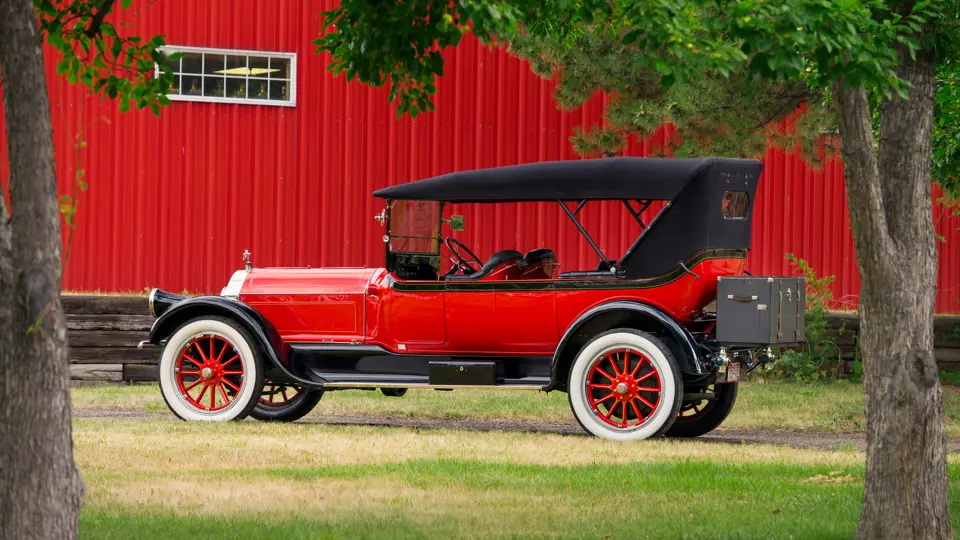
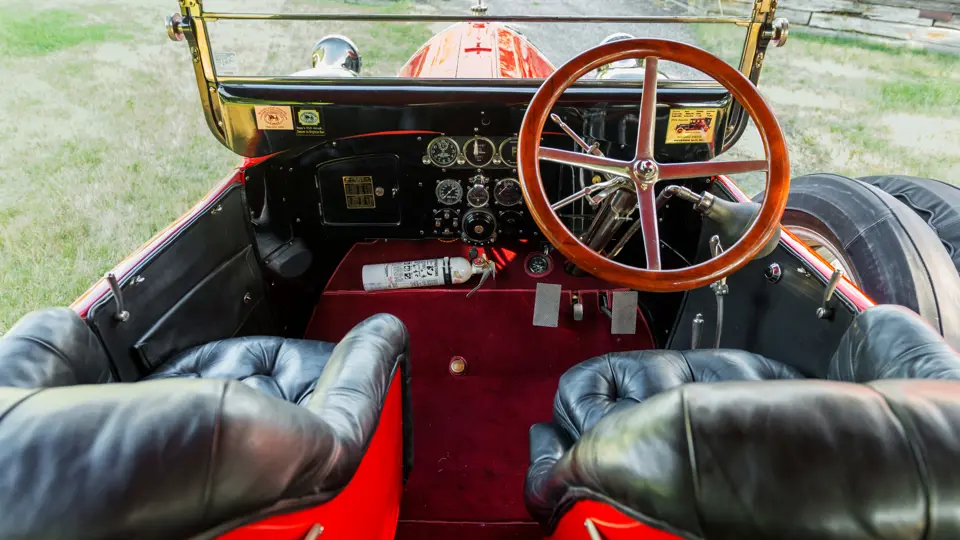
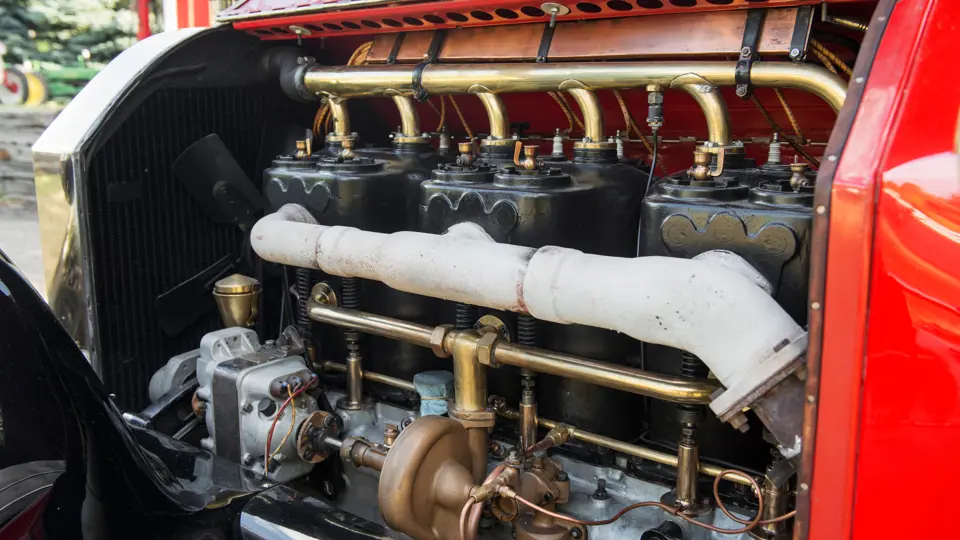

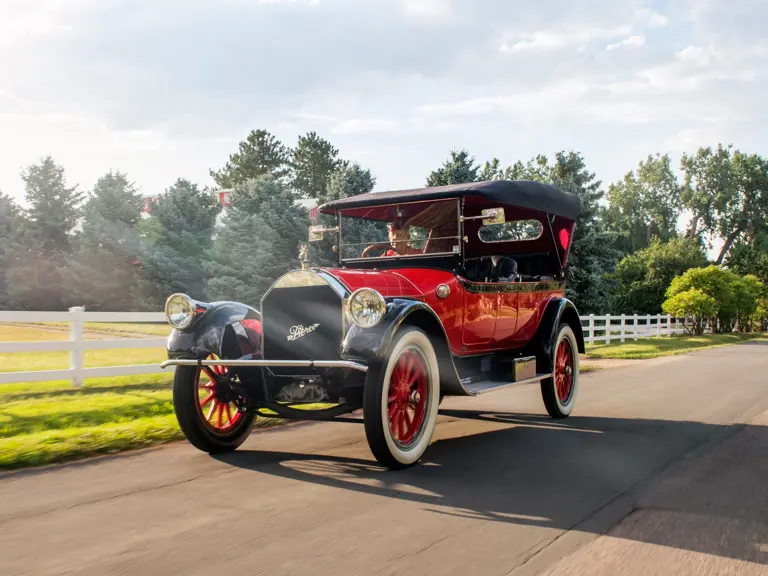
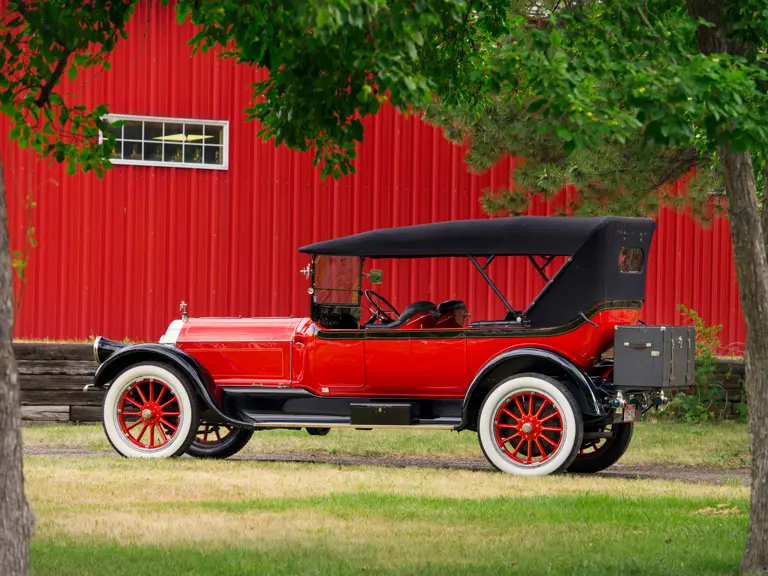

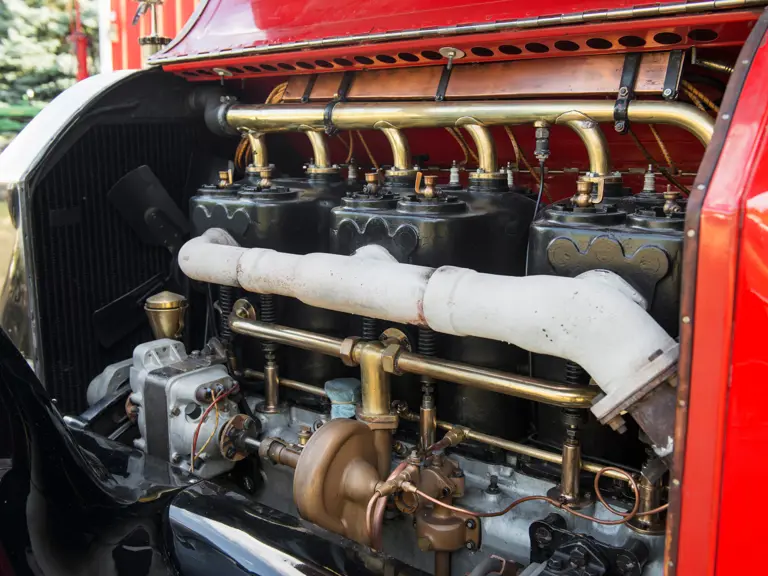
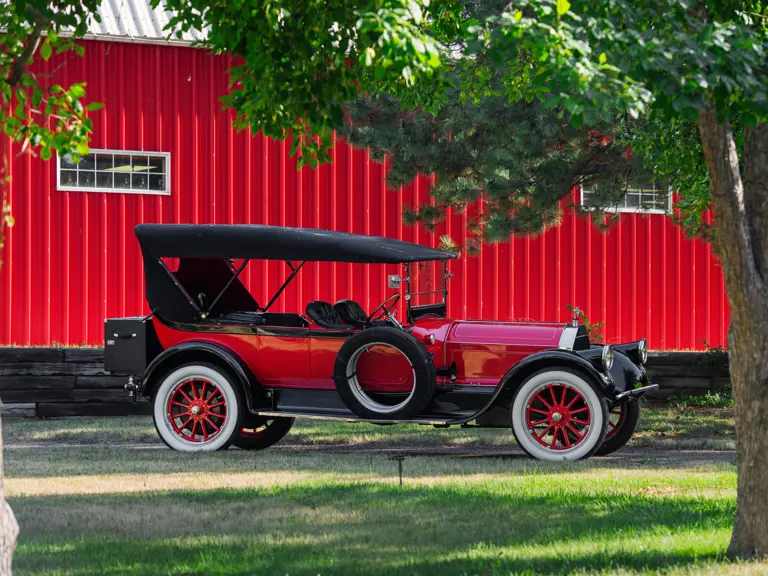

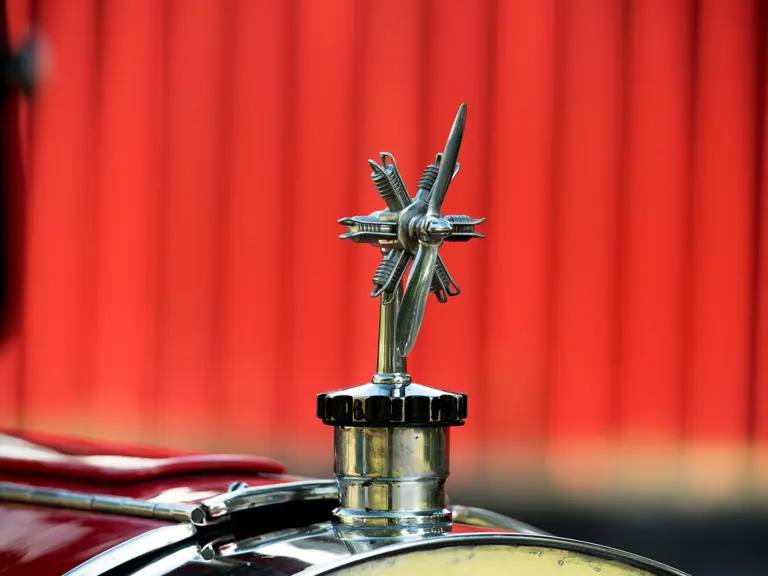
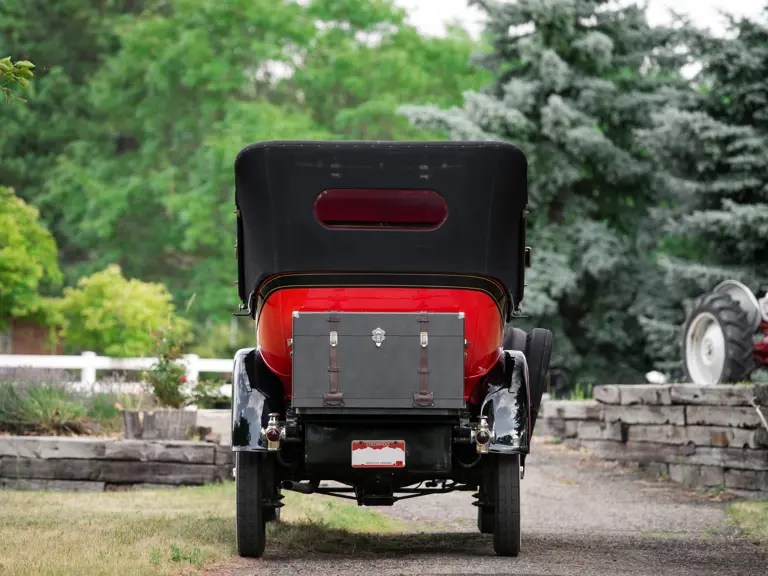
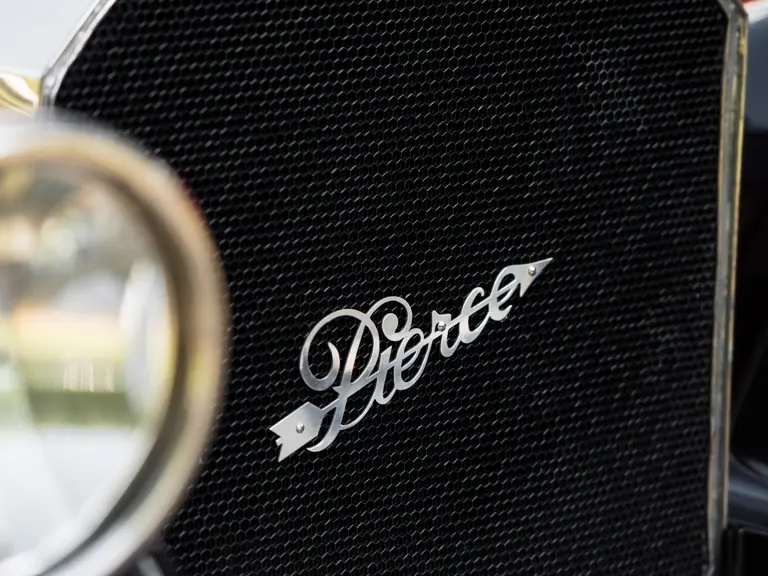
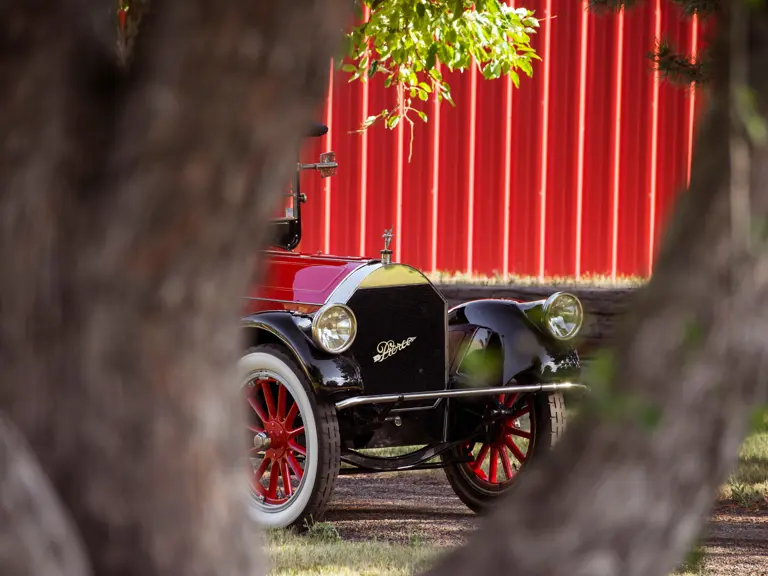
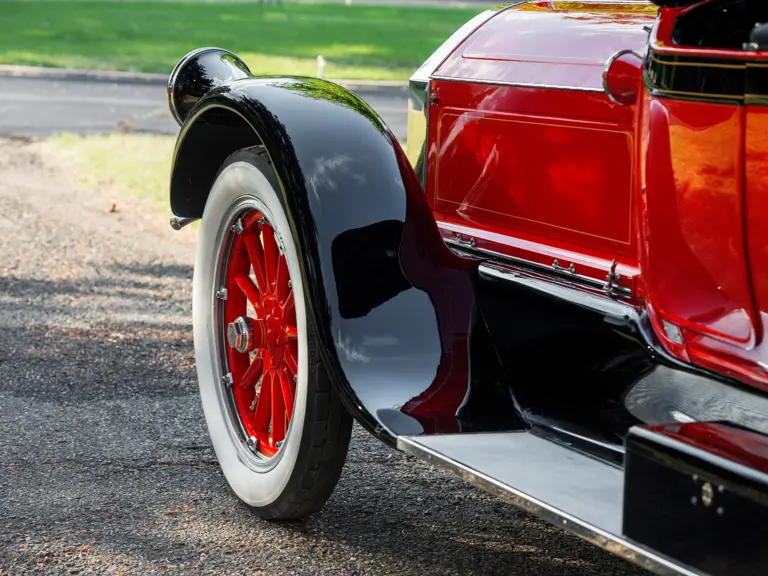
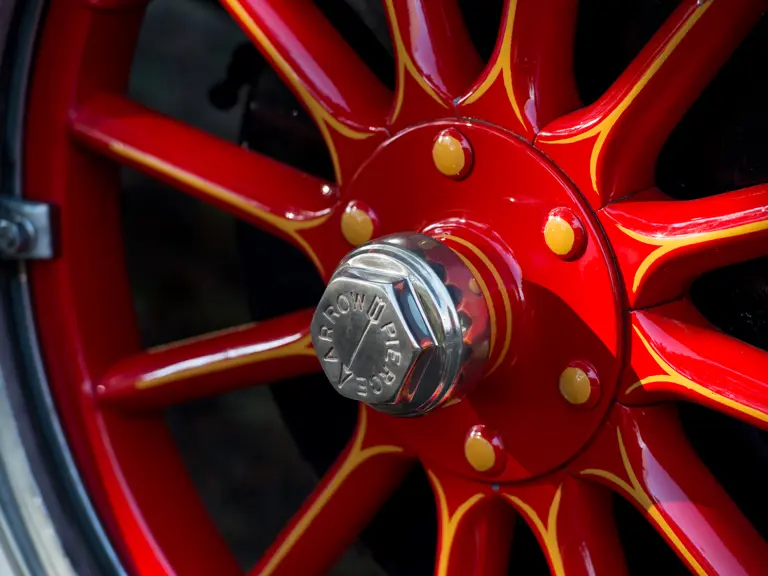
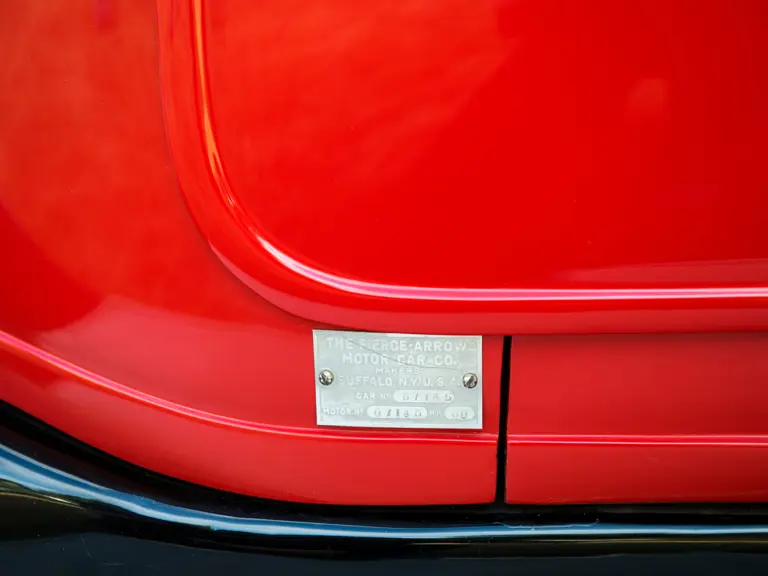
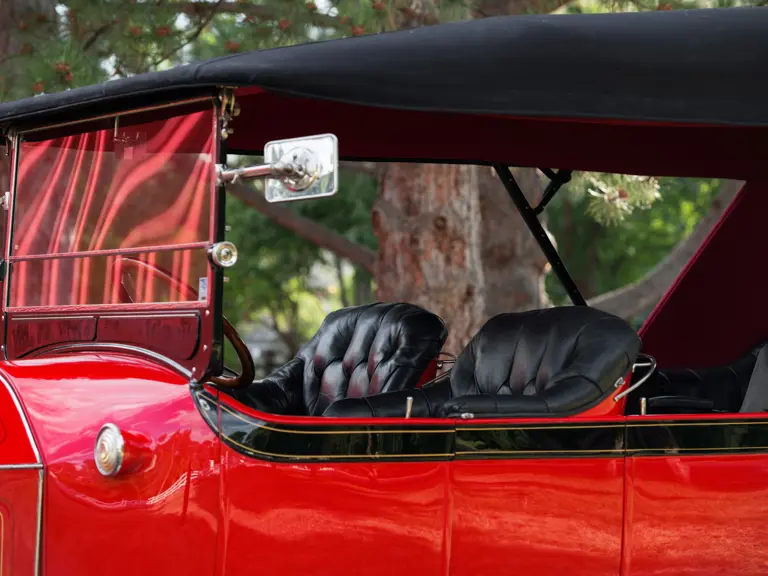
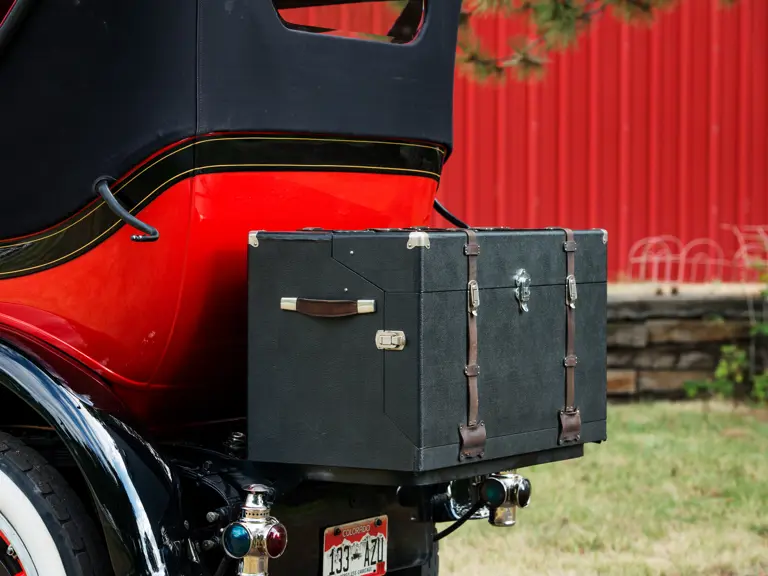
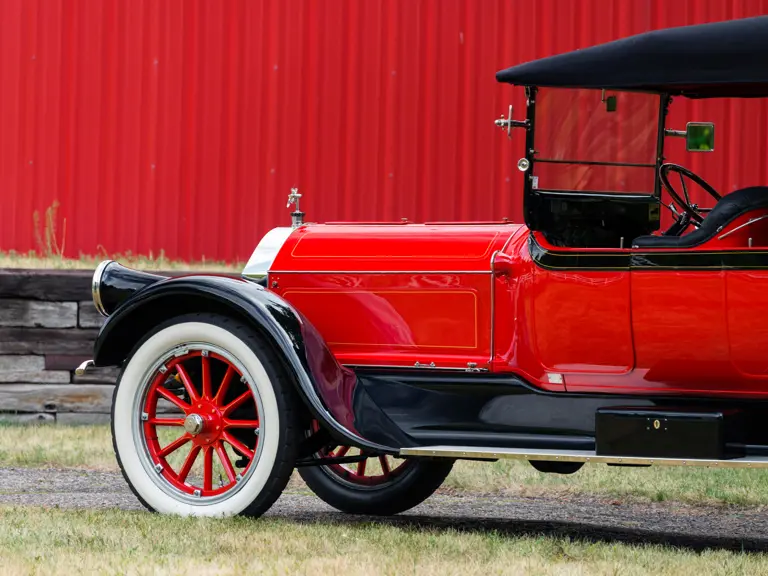
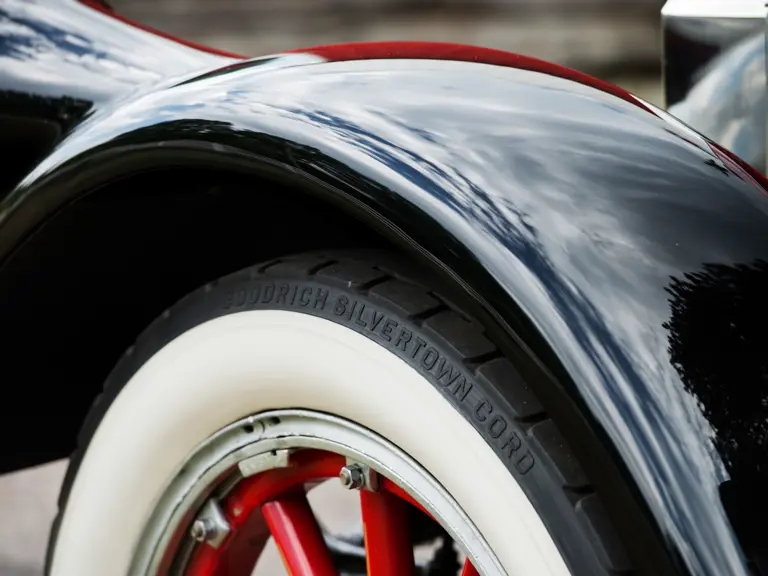
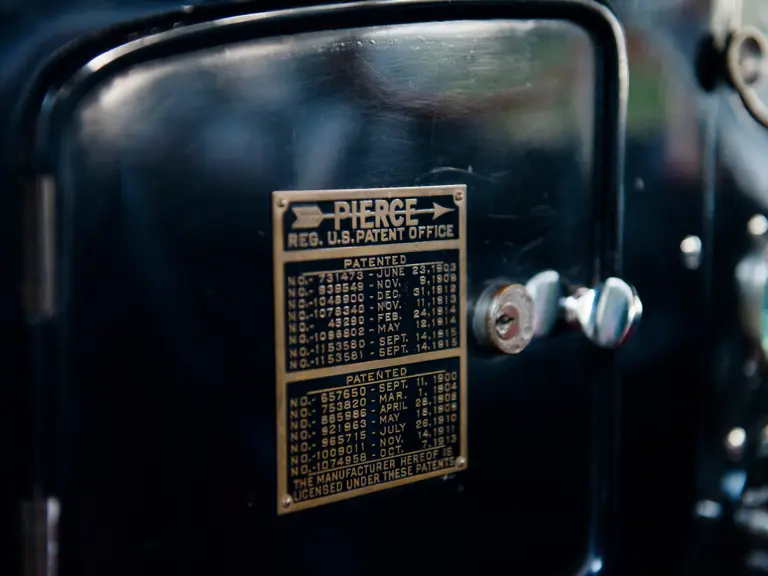
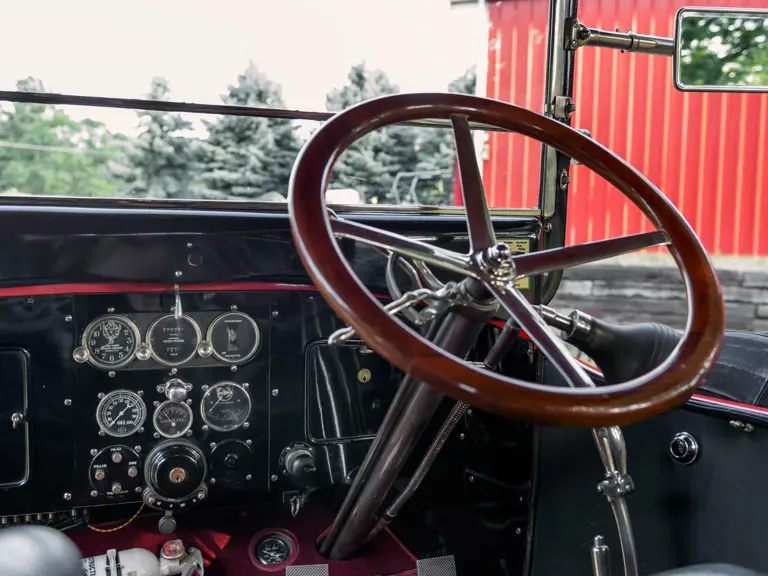
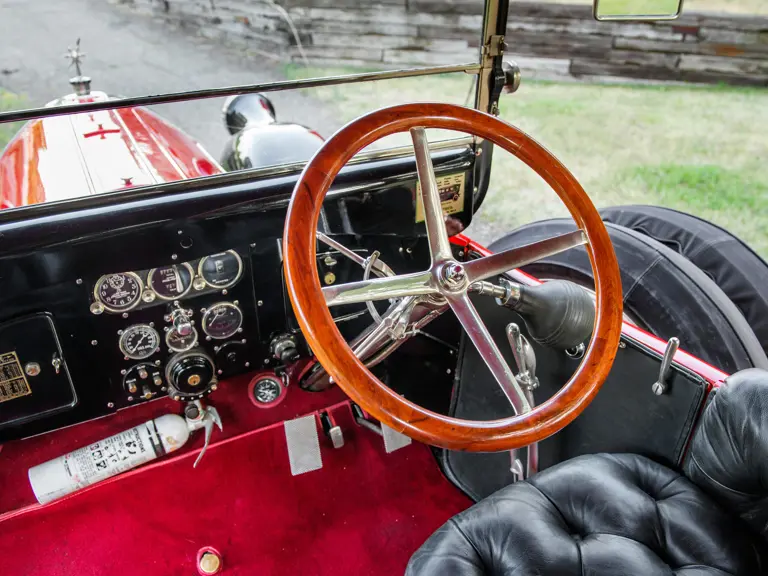
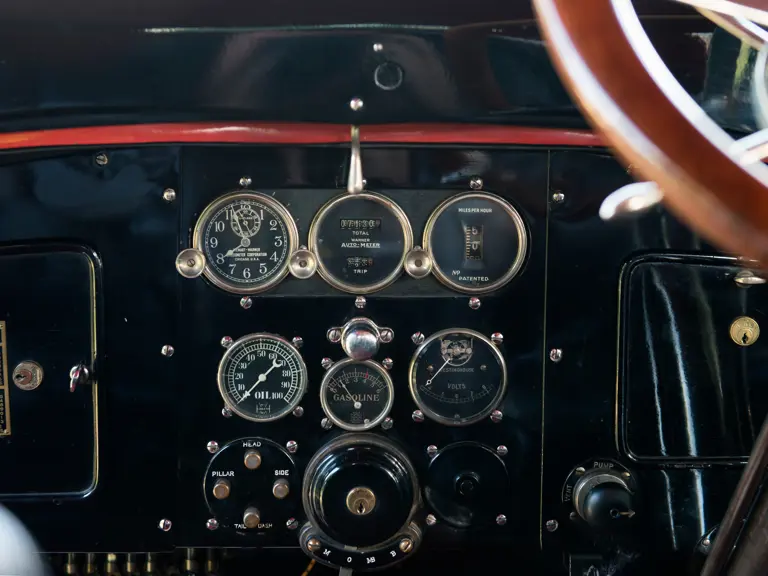
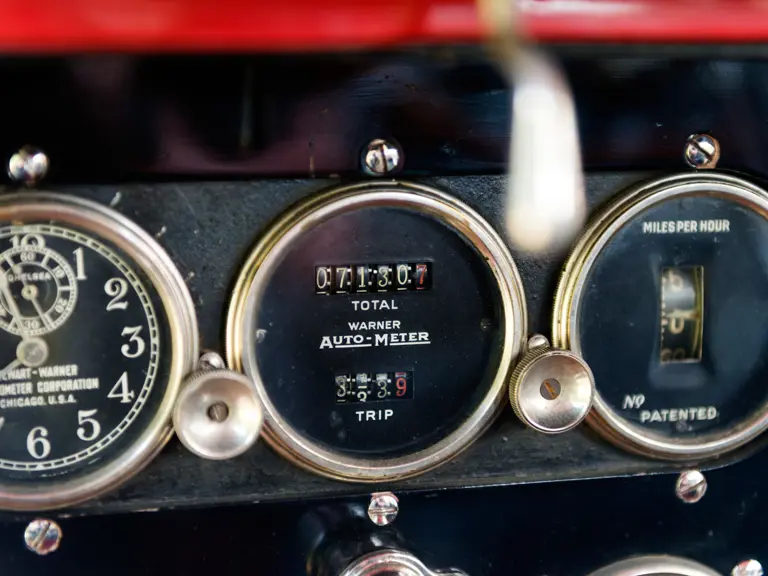
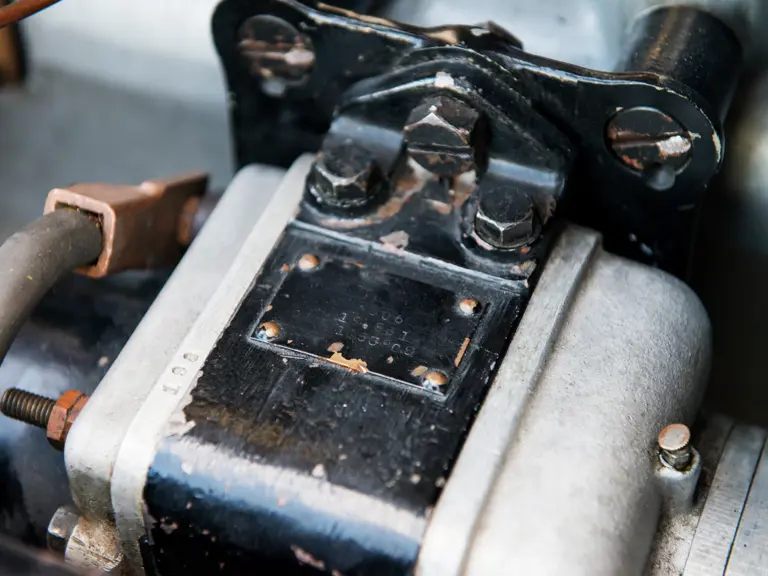
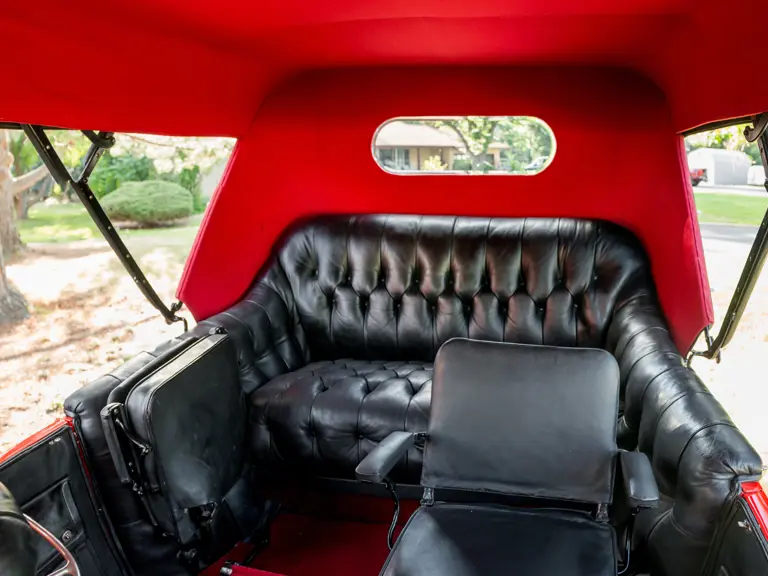
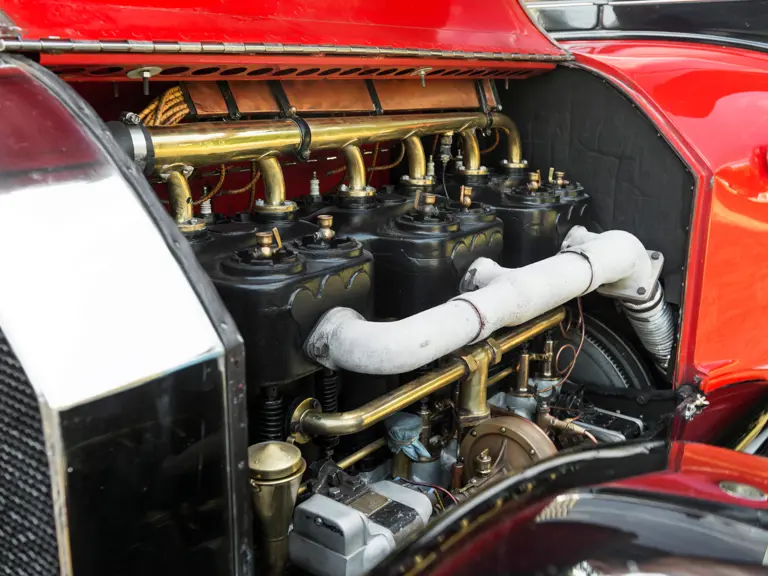
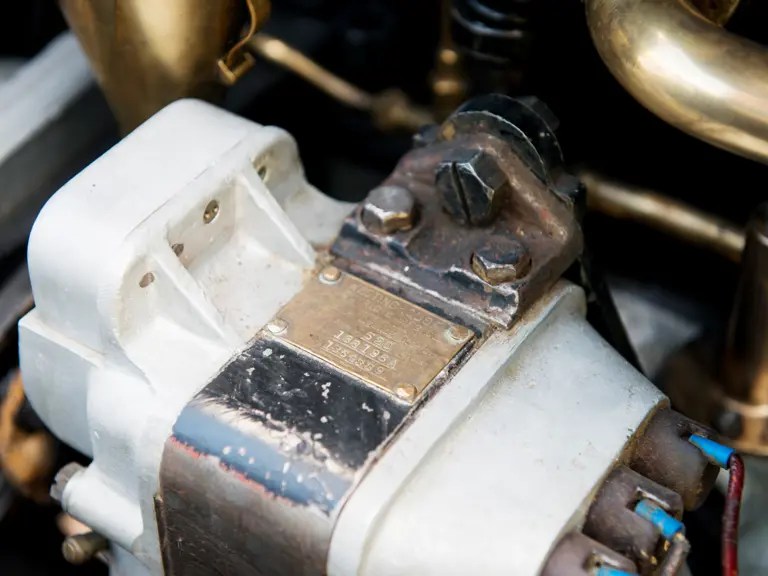
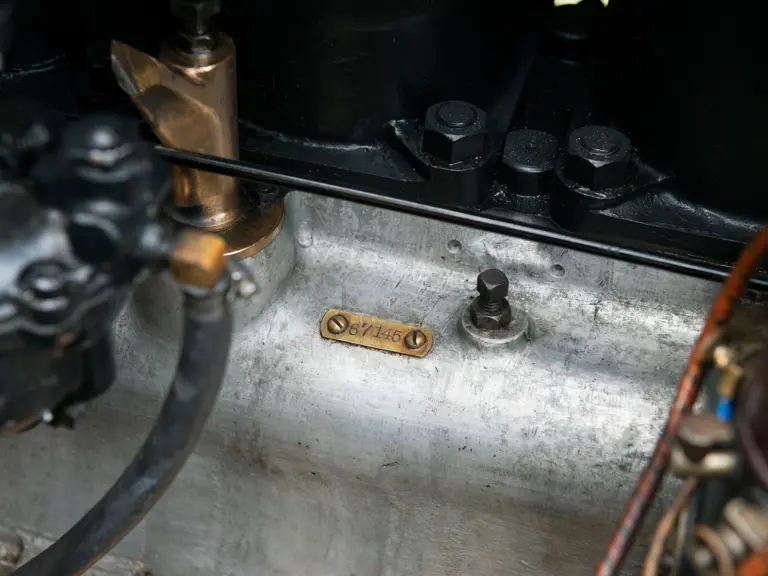
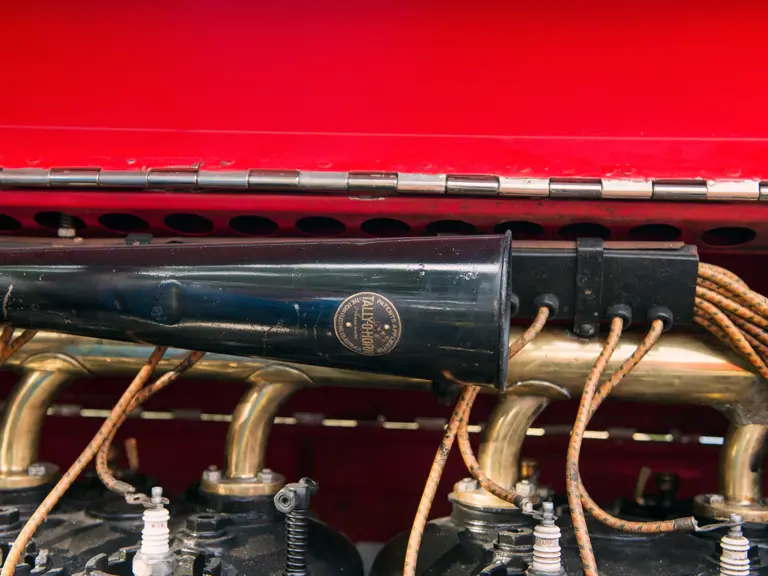
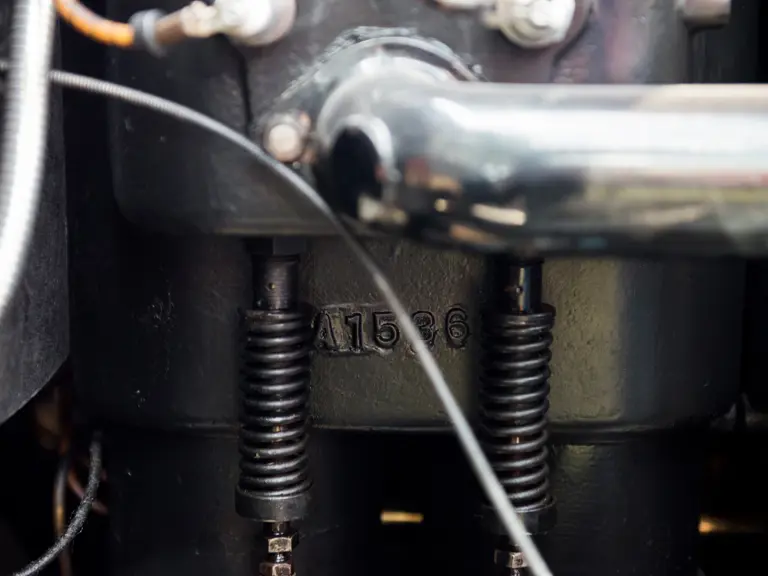

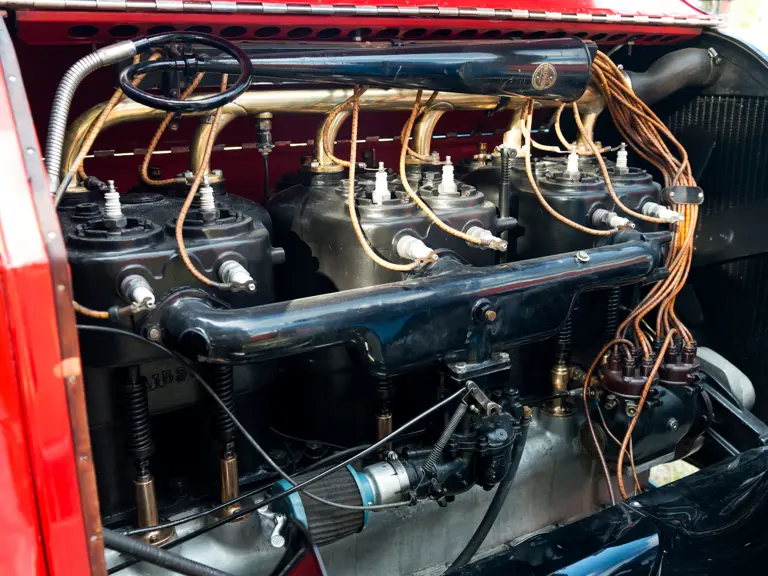

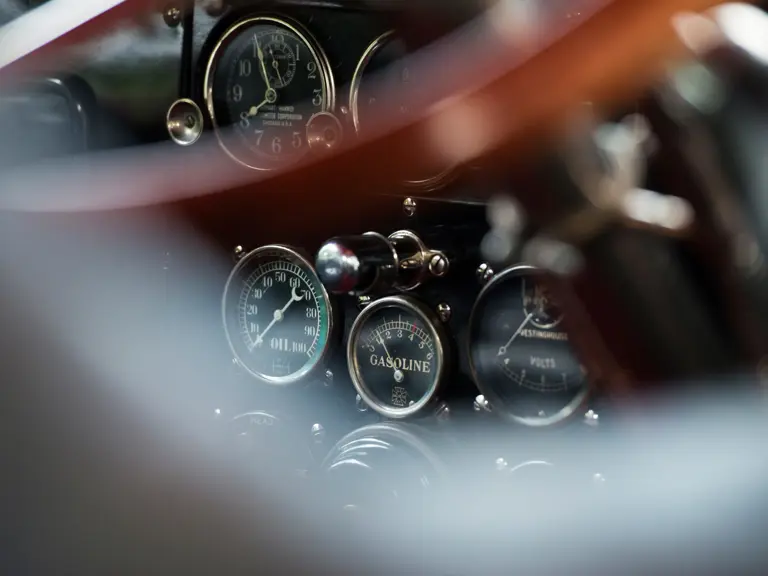
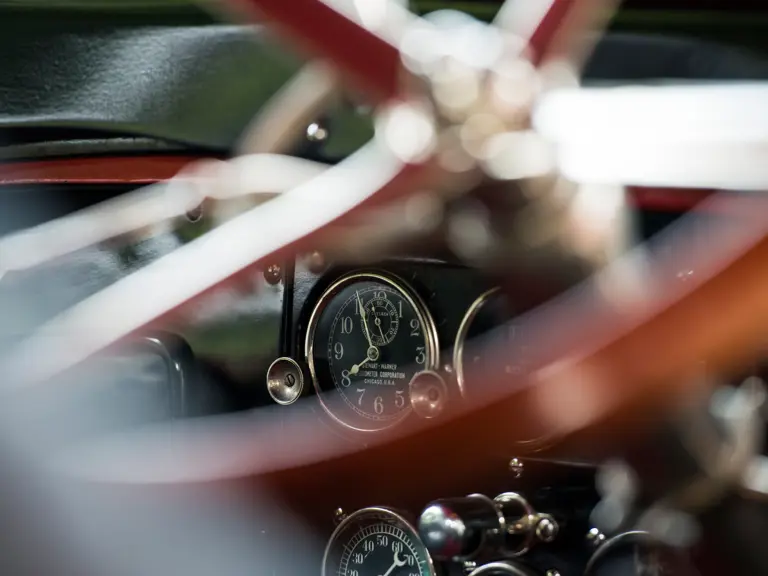
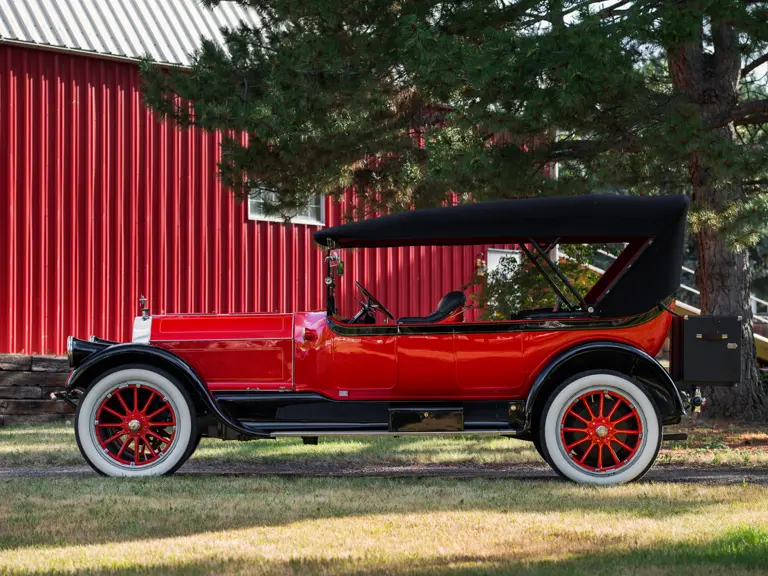
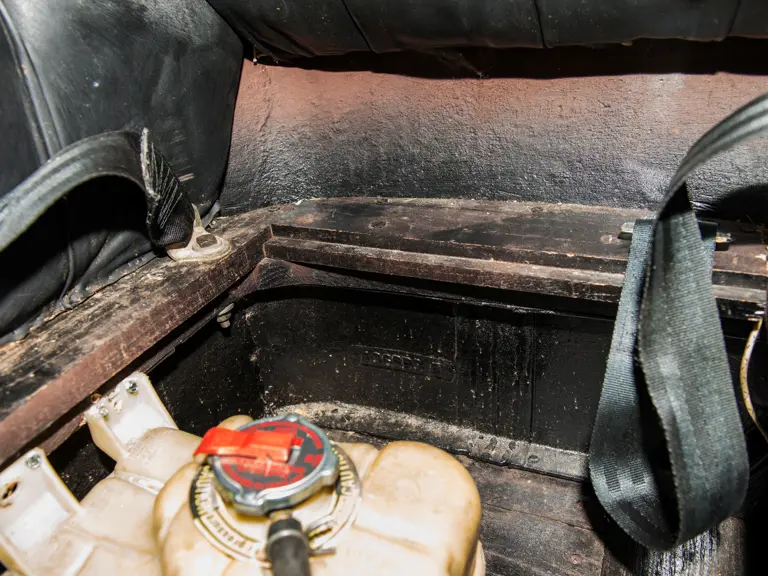

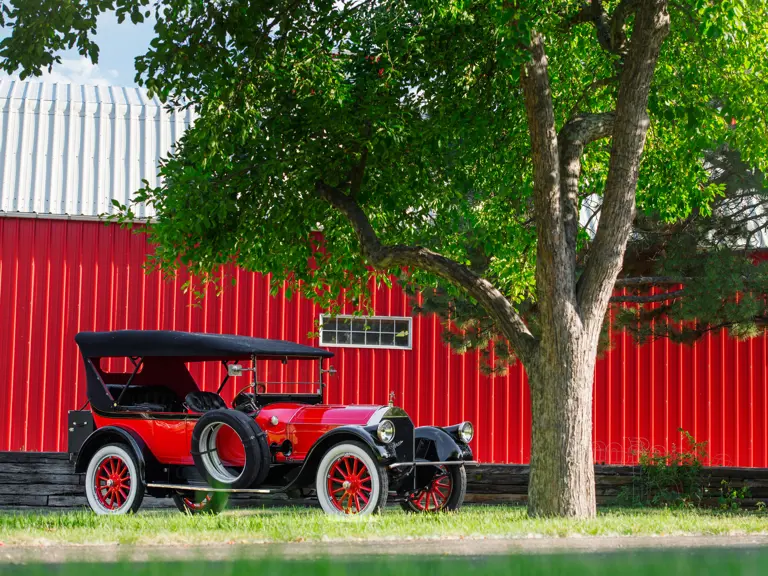
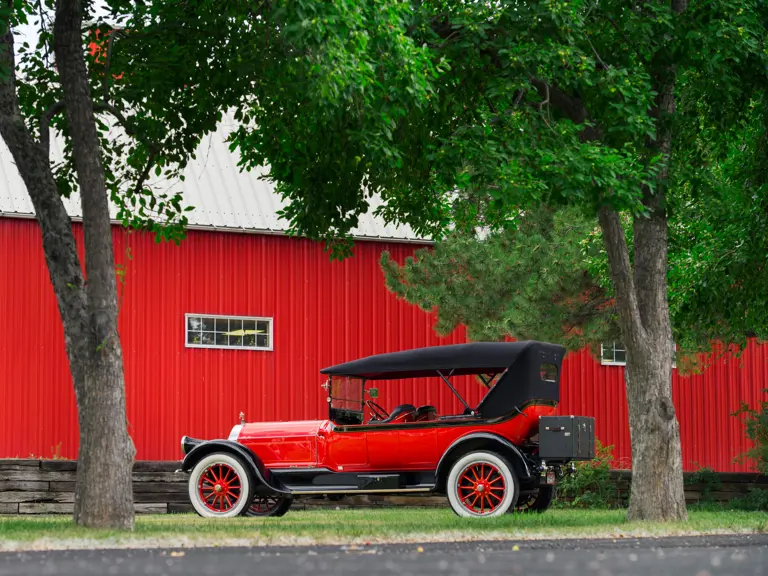
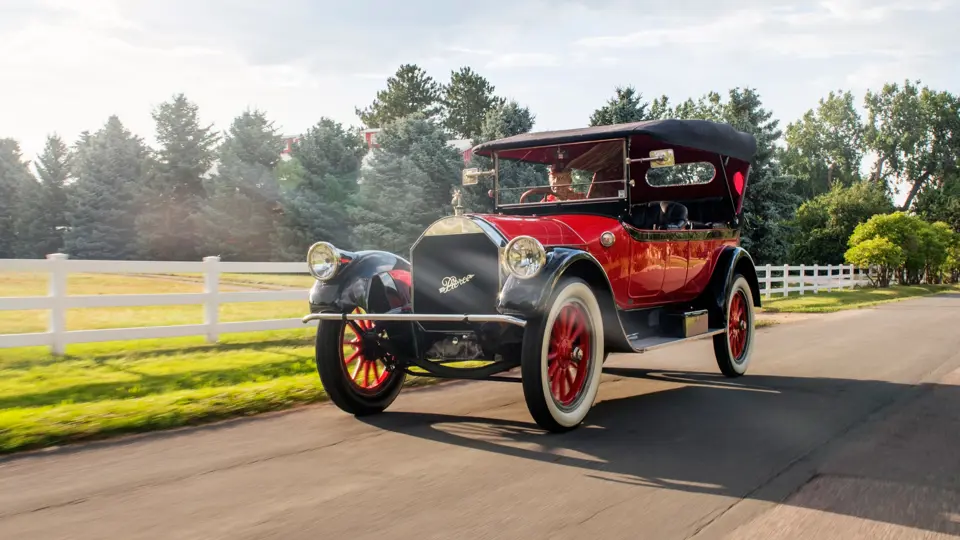
 | Hershey, Pennsylvania
| Hershey, Pennsylvania
